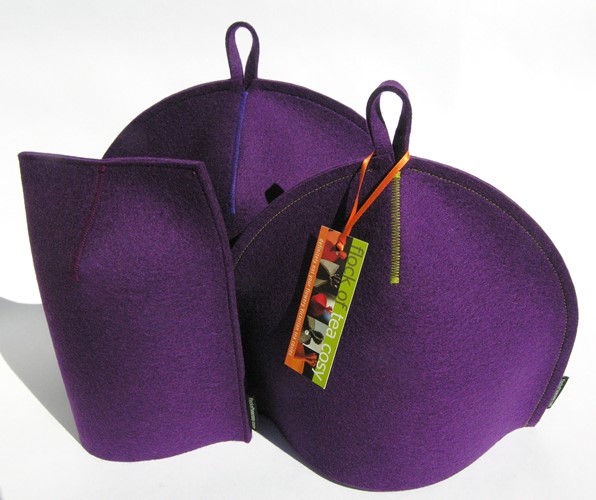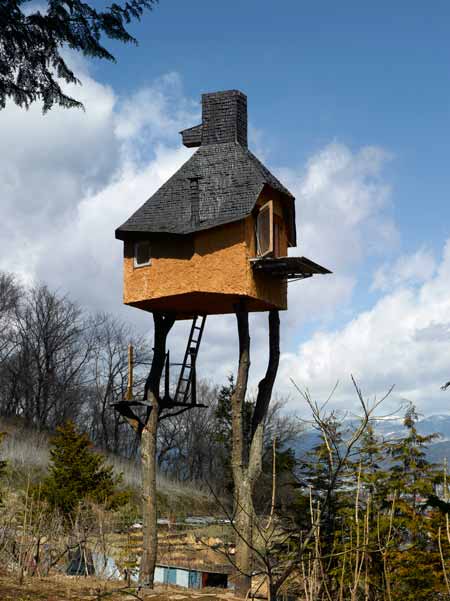
by Flock of Tea Cosy | Flock's Diary of modern wool felt teaware
Have you seen these? Perhaps it’s the spring in my garden — the sweet warm air, the fresh almost rubbery flowery buds, the crazily chirping birds — but my mind has been turning to garden structures and what more appropriate for this flock than a modern tea house?

A tea house by Terunobu Fujimori

The Black Tea House By David Maštálka of A1 Architects with sculptor Vojtech Bilisic — with exquisite detailing.

The Hat Tea House, also by A1 Architects
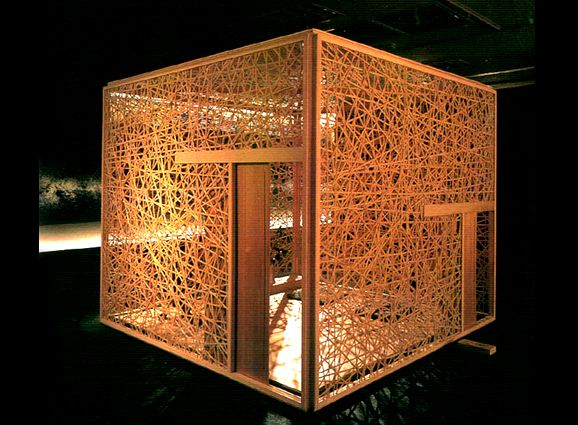
A pre-fab tea house kit from Tokyo Toshi (Note: sadly, the links I had to see more no longer work).

Actually designed by Saunders Architecture (photo by Iwan Baan) as an artist’s studio for Fogo Island, but a cup of tea would taste delicious in here I think.
I’d happily take any one of these, you?
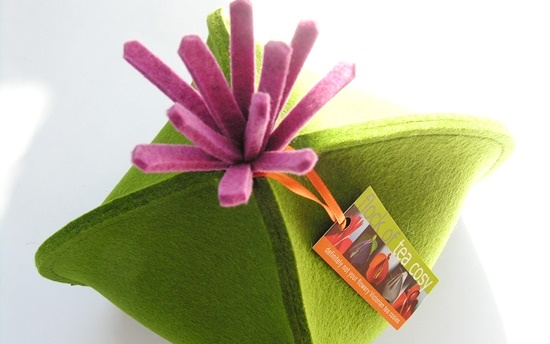
by Flock of Tea Cosy | Flock's Diary of modern wool felt teaware
I’m very proud of the craftsmanship and quality of the products I make to sell under the Flock of Tea Cosy banner, and it makes my day when a sale or a query comes over the transom, especially from some place faraway.
CLEAN, MODERN DESIGN
Some place like Finland, or Australia, or Italy, or the far west coast of the USA or even South Africa. It’s been the magic of the internet that enables the flock’s wares to be found by the relatively small, but, might I cheekily say, discerning, global group that appreciates these simple, cleanly designed, enduringly modern tea- and coffee-cosies.
WOOL FELT IS AN EXCELLENT INSULATOR
While most clients have mentioned it is the clean, minimalist design that brought them here, many have reported back their appreciation for this tableware being really good at its job. This is firstly due to the choice of fabric, dense wool felt, which is an excellent insulator. And secondly, because the Flock of Tea Cosy’s tea, coffee and mug cosy designs prevent heat from escaping which ensures the tea or coffee or hot chocolate stays hot.
A NATURAL FABRIC
Some clients have mentioned they were drawn to the natural fabric — wool felt is a natural fibre fabric (baa-baa sheep) which means it will a) decompose when its life is over, and b) is a renewable resource (ie: the sheep survive and are sheared every spring). It will leave a minimal footprint and is therefore eco-friendly.
CONSIDERED PRODUCTION
On that note, the Puzzle Pieces (trivets, coasters, mousepads, etc made from the off-cuts) use green-thinking to reduce the waste from the cosy production. More eco-friendly products using wool felt’s natural insulating quality.
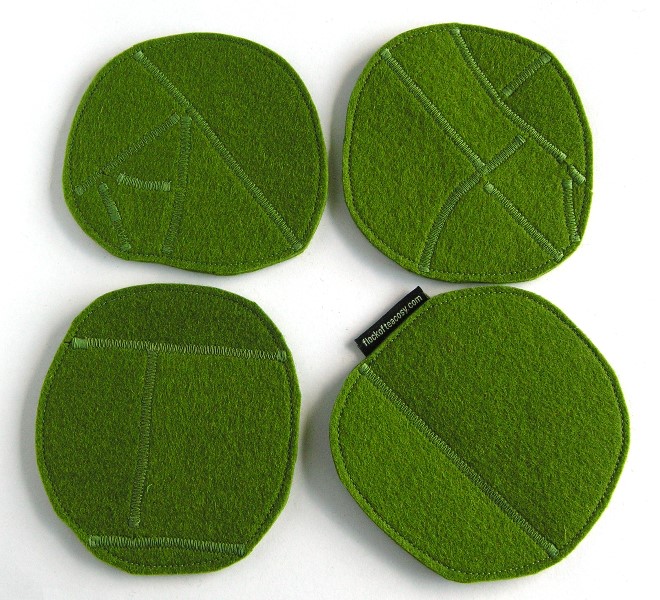
WELL MADE FROM QUALITY MATERIAL
Feedback also indicates notice of (thank you!) and appreciation for the excellent quality of the material used. The coloured 100% merino wool felt that Flock of Tea cosy uses is the best in the world. It’s made in western Europe to exacting and eco-concious standards. It is sturdy and consistent in its production, which can’t be said for some other sources, and the colours are rich and colour-fast. The Industrial wool felt, made here in North America, is a technical grade also made to top industry standards.
The high quality of the materials is paired with high standards of workmanship which ensure that each piece at Flock of Tea Cosy is well-made and made to last. Everything is individually handmade, all end seams are double-sewn, and the hang-tabs are securely hand-sewn on. For the puzzle-piece trivets, coasters and table-toppers all seams are button-hole stitched at their end.

With thanks to Flock of Tea Cosy’s clients, some first hand reports can be found here:
Testimonials
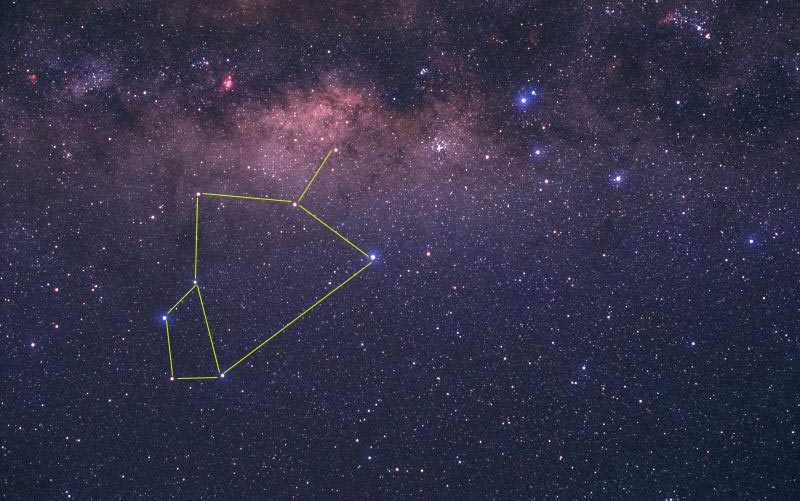
by Flock of Tea Cosy | Flock's Diary of modern wool felt teaware
It seems that if we’re tea drinkers then Sagittarius, the Archer is our man. Or rather, our constellation. Eight of Sagittarius’ brightest stars form a figure widely recognized by those who peer at the night sky as a teapot, with its handle to the left and its spout right, spewing steam in the form of Milky Way star clouds. How cool is that? (No tea cosy though, as far as I can see.)
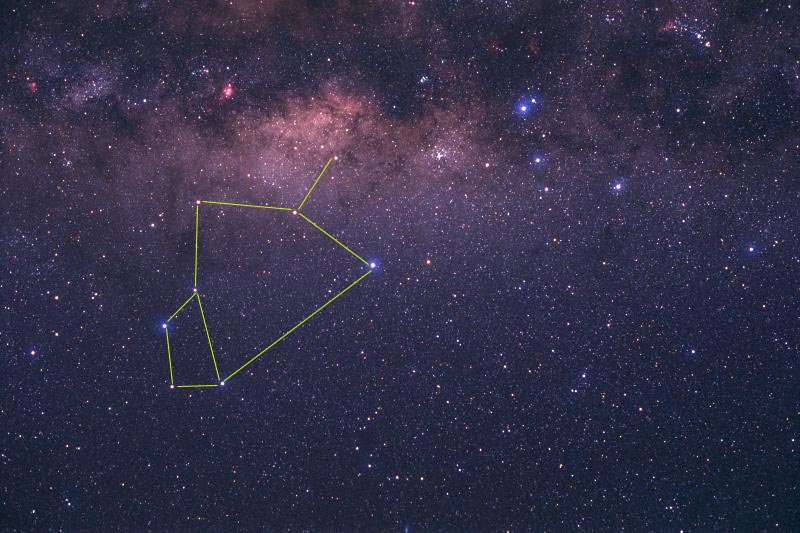
The image is by New Zealand astrophotographer Christopher Picking.
Although we’re in the midst of the Sagittarius zodiacal sign (November 22 and December 21), as it happens it’s not the best time to observe the constellation nor the teapot.
Martin J. Powell explains: Sagittarius is best observed during the Northern hemisphere summer months (winter in the Southern hemisphere) because during this time the constellation is visible throughout the night and is seen in darkness when it is highest in the sky. Southern hemisphere observers have the best view of Sagittarius, since it crosses almost directly overhead in the sky. In general, the Northern hemisphere has a less favorable view – the visibility of the constellation being worse the further North one is situated. Indeed, the Southern section of the constellation cannot be seen at all from high Northern latitudes. Sagittarius is not visible all year round because, from the vantage point of the Earth in its orbit, the Sun is seen to pass through the constellation during the Northern hemisphere midwinter period (equivalent to the midsummer period in the Southern hemisphere).
So, fellow northerners, let’s make a late night, mid-summer date to sip tea and admire the heavens, shall we?

by Flock of Tea Cosy | Flock's Diary of modern wool felt teaware
I love this recycling idea from the days when every household had an old felt hat around. This comes from a 1933 item in a newspaper in northern Australia.
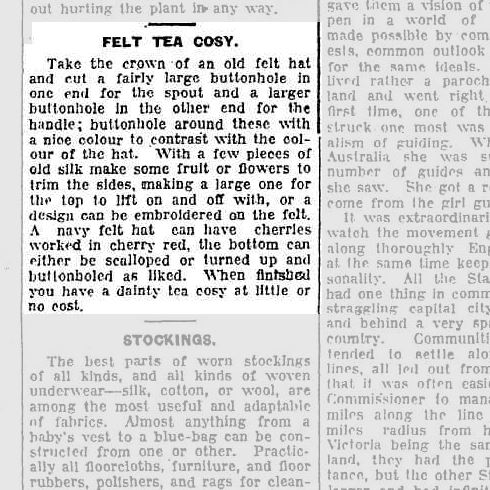

Here’s the link to the original file.








